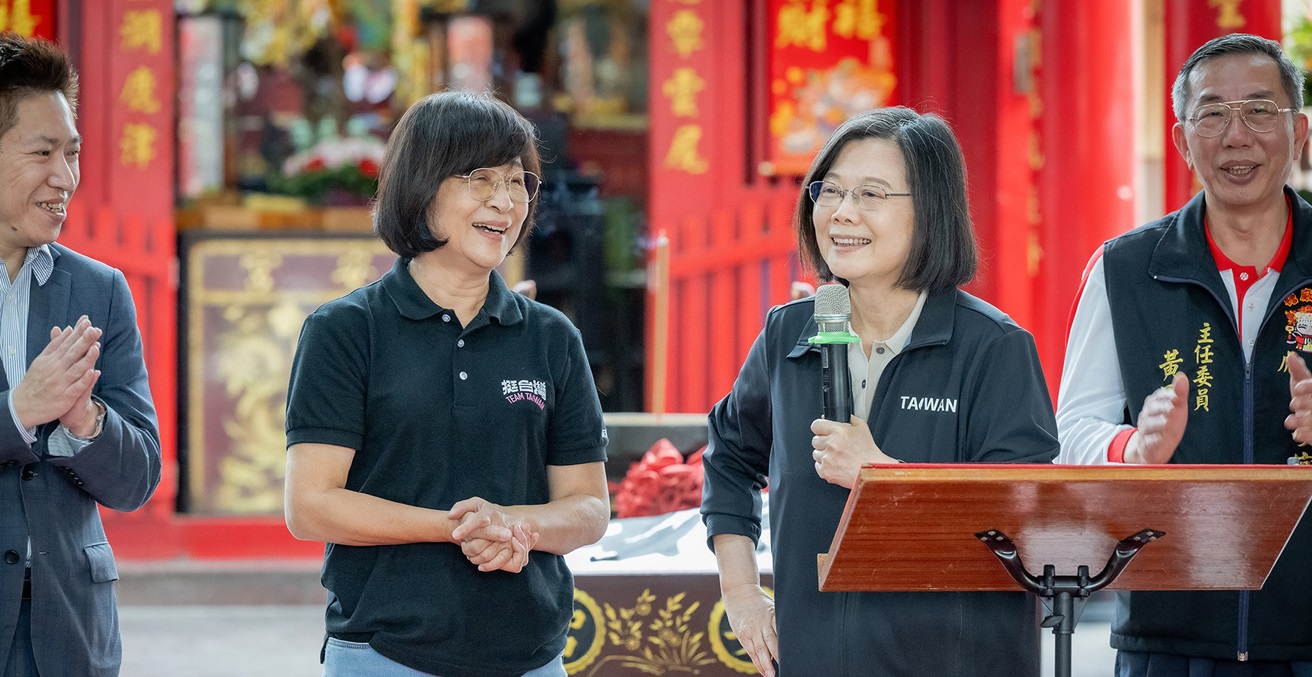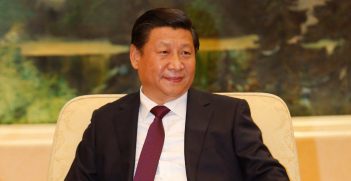Divergent Legacies on Double Ten Day: 10 October in China and Taiwan

10 October underscores Beijing and Taipei’s different ideological perspectives. For China, the Xinhai Revolution marks its march toward “Socialism with Chinese Characteristics,” for Taiwan, Double Ten Day is an exercise of its liberalism and democracy, fostering debate on the importance of developing its own symbolism and identity.
The Xinhai Revolution, beginning on 10 October, ended the Qing dynasty and two millennia of imperial rule in China. The revolution led to the founding of the Republic of China (ROC), proclaimed in 1912 by the Kuomintang. The day has been celebrated in Taiwan as National Day since the Kuomintang were defeated by the Communists in the Chinese Civil War in 1949 and fled to the island.
This seemingly momentous day in Chinese history, however, highlights the historical and ideological rift between China and Taiwan – demonstrated through differences in commemoration. For China, 10 October marks an important juncture in the country’s march toward socialism and national rejuvenation; and for Taiwan, the day serves as a symbol of the country’s democratic exercise and struggle in determining its identity.
Regardless, 10 October is an example of the contest between Beijing and Taipei on their respective soils to demonstrate their different outlooks for their future.
On the Mainland
In China, under the Communist Party, 10 October is recognised as a historical milestone on the path towards the founding of the People’s Republic of China (PRC). Speaking in 2021 on the 110th anniversary of the Xinhai Revolution, Chairman Xi Jinping noted, “the Revolution of 1911 will forever stand as a towering landmark on our nation’s journey toward rejuvenation.”
Xi outlined a deterministic historical narrative, limiting 10 October to be a mere pitstop on the journey of China’s rejuvenation as a socialist republic led by the Communist Party. He also stated, “the past 110 years have shown us that to realise national rejuvenation, the path we take is of fundamental importance…Socialism with Chinese Characteristics has proven to be the only correct path.”
Beijing also uses 10 October to promote reunification, particularly given the day’s importance in Taiwan. Promoting reunification generally takes two tones, part of China’s carrot and stick policy to Taiwan. The carrot is exemplified through a positive statement by Xi: “national reunification by peaceful means serves the interests of the Chinese nation as a whole, including compatriots in Taiwan.” The stick typically involves an implicit threat: “those who forget their heritage, betray their motherland, and seek to split the country, will come to no good end. They will be disdained by the people and condemned by history.”
Given 10 October’s comparative unimportance to other days in the Chinese Communist calendar – such as the founding of the PRC on 1 October, the founding of the Communist Party on 1 July, and Labour Day on 1 May – Beijing does not celebrate 10 October annually. As evidenced by the 2021 commemorations, the PRC uses the day to promote Taiwan’s reunification with China and to “oppose Taiwan independence forces.”
On the other side of the Strait
In Taiwan, commemoration of the Republic of China’s (ROC) National Day has become the subject of intense political debate – not dissimilar from Australia’s own discussion surrounding 26 January. The existence of such a political debate is a clear distinction between Taiwan’s democratic system and China’s authoritarian rule.
During the 1911 Revolution, the island of Taiwan was under Japanese colonial rule and was separated from events taking place in China. Only in 1949 did the ROC, under Chiang Kai-shek’s authoritarian rule, retreat to Taiwan. Martial law was imposed, Chinese nationalism and symbolism was enforced, and ROC institutions were transplanted.
Since democratising in the late 1980s, the Kuomintang has relinquished its one-party hold over Taiwan, and the country has since lifted much of the ROC’s nationalism and symbolism from public life. Democracy has also opened Taiwan’s history to public scrutiny, particularly surrounding Chiang Kai-shek’s role, martial law, and systemic human rights abuses during the White Terror period.
Taiwan still maintains its national day on 10 October. Since Tsai Ing-wen from the pro-independence Democratic Progressive Party (DPP) took the presidency in 2016, the Taiwanese government has spearheaded public debate on what the ROC means to Taiwan today, and its role as a legal construct in modern Taiwanese politics and society.
The ROC national anthem has been reinterpreted on multiple occasions and passport redesigns have removed references to the ROC in English. Speaking on the redesign, independent New Power Party’s creative media director Jerry Liu saw the change as the DPP government’s intention to draw a clear distinction between Taiwanese and Chinese.
This trend towards “Taiwanisation” and developing a Taiwanese identity has not been without controversy. This year a new logo featuring two Chinese “ten” characters and a slogan reading “Democratic Taiwan, resilience, and sustainability” drew fire. But it wasn’t these elements that raised concerns, rather it was the English underneath that referred to “Taiwan’s National Day” while omitting any reference to the ROC.
The English omission drew the Kuomintang’s ire, which has rebranded itself to be the Beijing-friendly opposition party. Former President Ma Ying-jeou, who fostered the most amicable cross-strait relationship in decades, boycotted the 2023 celebrations. Current Taipei mayor and alleged great-grandson of Chiang Kai-shek, Chiang Wan-an, also joined the boycott.
However, this omission is not new. Huang Kwei-bo, diplomacy professor at Taiwan’s National Chengchi University noted, “the DPP has shied away from using the name ROC in the national day celebration logos since 2016, when it formed government.”
The controversy surrounding Double Ten Day is a symptom of a greater discussion in Taiwan over self-determination of its peoples. For the pro-Beijing Kuomintang and ROC-friendly camps, Double Ten Day represents the standing of the continued existence of the ROC and its position as a separate country to the PRC on the mainland. For the pro-independence DPP and those supporting a separate Taiwanese identity, Double Ten Day holds the country back from breaking free of the shackles of the Kuomintang’s authoritarian legacy and imposition of a Chinese identity onto Taiwan.
In her 2023 national day speech, President Tsai Ing-wen epitomised Taiwan’s struggle for self-determination: “we must continue to move forward in face of challenges, and if we don’t move forward, we will go backwards; if we don’t work hard, we won’t be able to control our future and destiny.”
Diverging legacies
On the mainland, 10 October has been employed as a propaganda tool and reduced to a mere pitstop on China’s inevitable journey as a socialist country ruled by the Communist Party. Beijing has used the day to advance its reunification goals to simultaneously entice and threaten Taiwan to rejoin the “motherland.”
In Taiwan however, Double Ten Day is a contentious point of debate which reflects its current struggle in defining a distinct Taiwanese identity. The ROC National Day is a lingering relic of Taiwan’s authoritarian past under the Kuomintang, and is one symptom among many others, of Taiwan’s transition to democracy and achieving historical reconciliation.
Cross-strait relations are often understood in terms of China vs Taiwan, and authoritarianism vs democracy. At its core, however, they are a contest of fundamentally different visions for national progress, with both countries grappling with ascertaining their own identity.
Samuel Ng holds a Bachelor of Laws (Hons) and Bachelor of International Business from the Queensland University of Technology. He is also a Westpac Asian Scholar for Taiwan, previously studying at the National Chengchi University having undertaken units in Taiwanese international relations, diplomacy, and political history. His research interests include cross-strait relations and East Asian politics.
This article is published under a Creative Commons License and may be republished with attribution.





